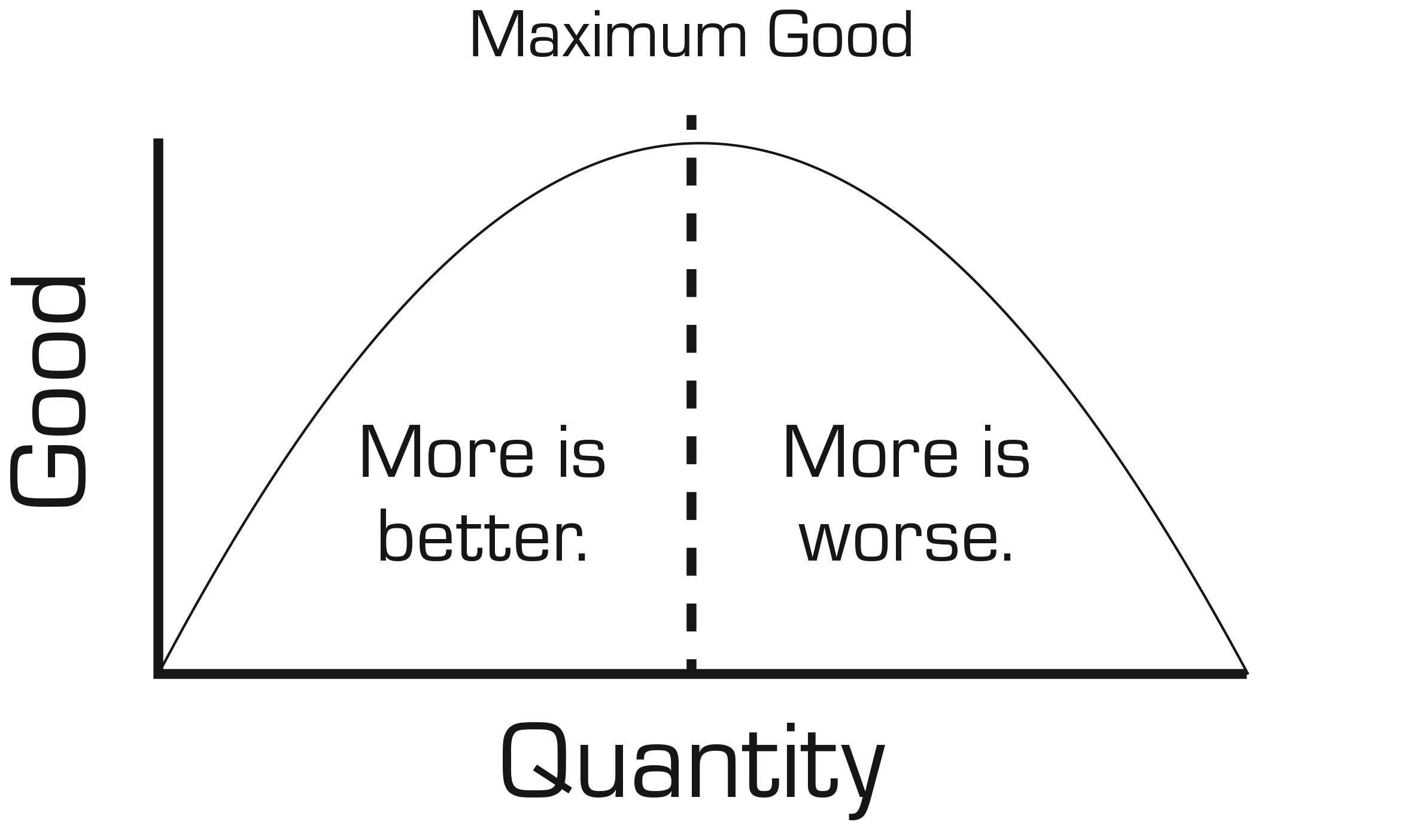How do we get more good out of life? The best way might be to take a “less is more” approach.
A story from twenty-four years ago illustrates. My wife Sandra suddenly shouted, “Erik! James is throwing up!” We were driving the freeway. Our son James was two, in a car seat in the back.
Ahh, for crying out loud. I found the nearest place to pull over.
We inspected the disaster and the strange thing was the color of the vomit. “Wow,” I said to Sandra, “that’s some crazy looking florescent orange barf. What in the world?”
It took a while to unravel the mystery, then it clicked: orange PEZ. PEZ is an Austrian hard candy that looks like tiny cinder blocks, offered in toy dispensers. There are also “refill packs” of twelve in a sleeve. Sandra had bought James his first PEZ dispenser to reward him for potty training, along with a slew of refill packs, and we later discovered that James had found the refill packs and eaten a couple hundred orange PEZ just before we got into the car.
Too Much of a Good Thing is a Bad Thing
PEZ is good. But two hundred PEZ is bad. Solomon the Israelite sage described an ancient overload on sweets similar to James’ PEZ incident:
If you find honey, eat just enough — Too much of it, and you will vomit.1
A tablespoon of honey is a good thing. But if we glug down a cup of honey we’re going to throw up. In Solomon’s time food supplies were scarce, and anyone who came across honey was tempted to try to eat as much as they could to stock up calories. But if they overdid it, they’d lose all the calories because they couldn’t hold them down.
Many of the good things of life follow a similar pattern. They’re good, up to a point, then become bad.
- A sprinkle of pepper on eggs is a good thing. A tablespoon of pepper on eggs is a bad thing.
- A mild pressure at work improves performance. But high pressure sabotages performance.
- Time spent with relatives is a good thing. But too much time and we’re crawling the walls.
There’s an inverted-U relationship between goodness and quantity:

In this graph, the vertical axis is the amount of good, the horizontal axis is the quantity. Notice the peak in the middle described as “maximum good.” That’s the sweet spot where we’re getting the most goodness out of something, and any attempt to get more makes goodness decline. When we’re left of the line of “maximum good,” more is better. But when we’re right of the line, more is worse.
Think about a Saturday afternoon watching television. When we start out, it’s good. We’re enjoying the basketball game or the home and garden show. After ten minutes in, we’re still watching, because more television feels better. But the game ends, or the show ends, and we’re faced with a choice to keep watching or turn it off. If we keep watching, we might start feeling the fatigue. It’s not feeling better. It’s feeling worse. By the time we’re a couple hours into the television watching, the goodness is declining, not increasing.
We’re past the peak of the inverted-U. We should have switched off the TV an hour ago and prevented the couch coma.
Most of life is this way. Food is good. More food isn’t necessarily better. Leisure is good. More leisure could be worse, not better. Work is good. More work might be worse, not better. If we’re aware of the inverted-U, we can cut things off as they near the peak instead of letting ourselves plummet past it. We can say no to more television, or more leisure, or more work, and keep our experiences at maximum good.
If we want to maximize goodness in our lives, we need to understand the inverted-U. It shows us how for many of the things of life, too much of a good thing is a bad thing.
1Proverbs 25:16, NIV

